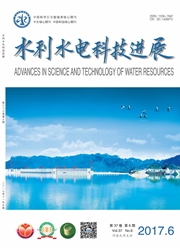

 中文摘要:
中文摘要:
对天然河流纵向离散系数的确定方法进行综述,详细分析了理论公式、示踪试验、经验公式这3种方法的研究现状和发展趋势。讨论了基于断面流速分布的理论公式的适用范围以及国内外学者对该公式使用的拓展;阐述了利用现场示踪试验数据计算纵向离散系数的矩量法、演算法、直线图解法和多种优化方法,并分析了它们各自的优缺点;列举了一些具有代表性的经验公式。探讨了弯道和死水区对天然河流纵向离散系数的影响;阐述了针对传统一维纵向离散方程的缺点提出的一些其他模型,并提出了天然河流纵向离散系数研究中一些有待深入研究的问题。
 英文摘要:
英文摘要:
A review was made of the methods for detemtination of the longitudinal dispersion coefficient of natural rivers, with emphasis placed on the current situation and development trends of the following methods, i.e. the theoretical method, the tracer experiment, and the empirical formulas. The applicability of the theoretical formula based on the velocity profde and its further development by the researches at home and abroad were discussed; some methods for calculation of the longitudinal dispersion coefficient by means of tracer experimental data, including the moment method, routing method, linear graphical method, and optimization methods, were expounded and their advantages and disadvantages were analyzed; some typical empirical formulas were summarized. Moreover, the influences of bends and dead zones on the longitudinal dispersion coettlcient were investigated, and some modified models to avoid the disadvantages of the conventional 1-D advection-dispersion equation were also discussed. Finally, some problems for further research on the longitudinal dispersion coefficient of natural fiver were put forward.
 同期刊论文项目
同期刊论文项目
 同项目期刊论文
同项目期刊论文
 期刊信息
期刊信息
